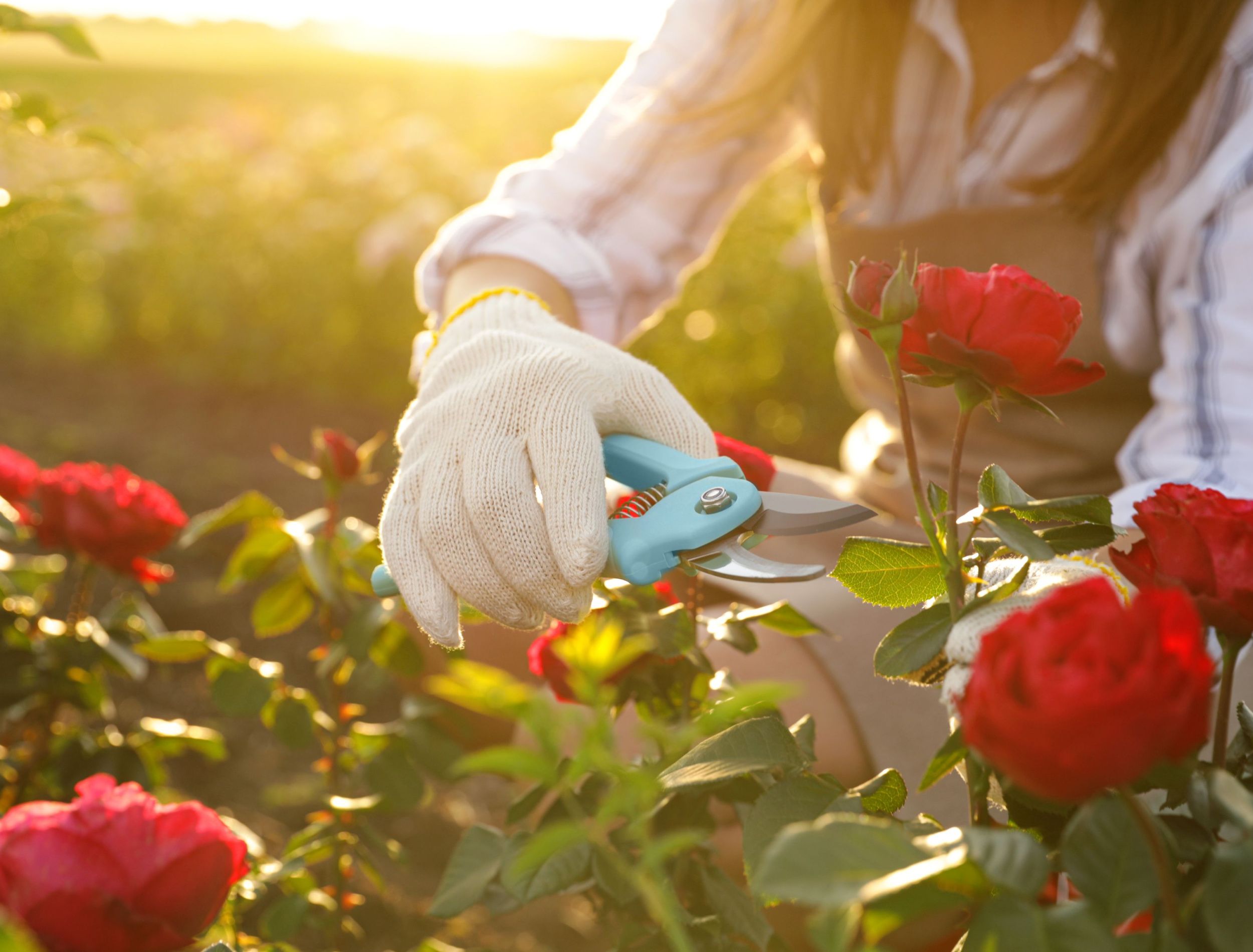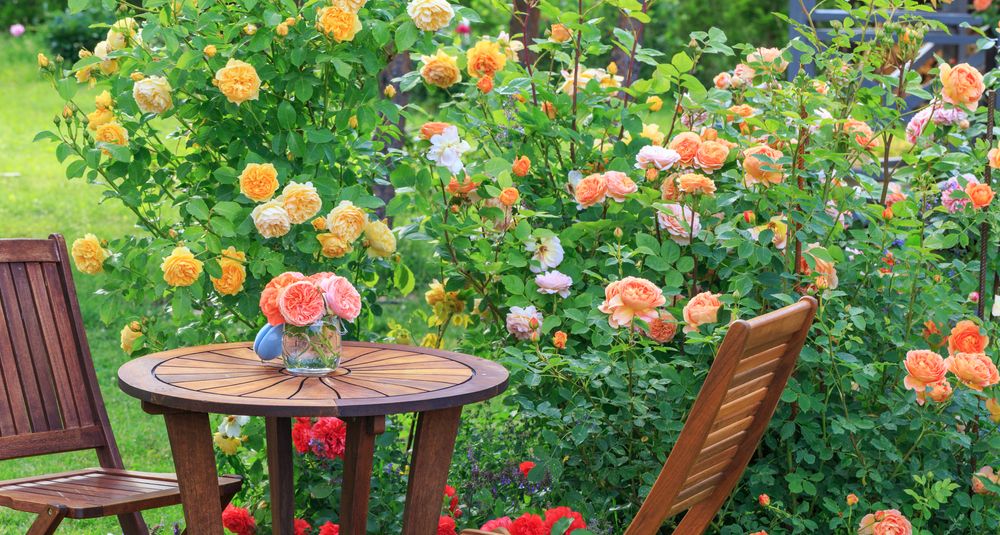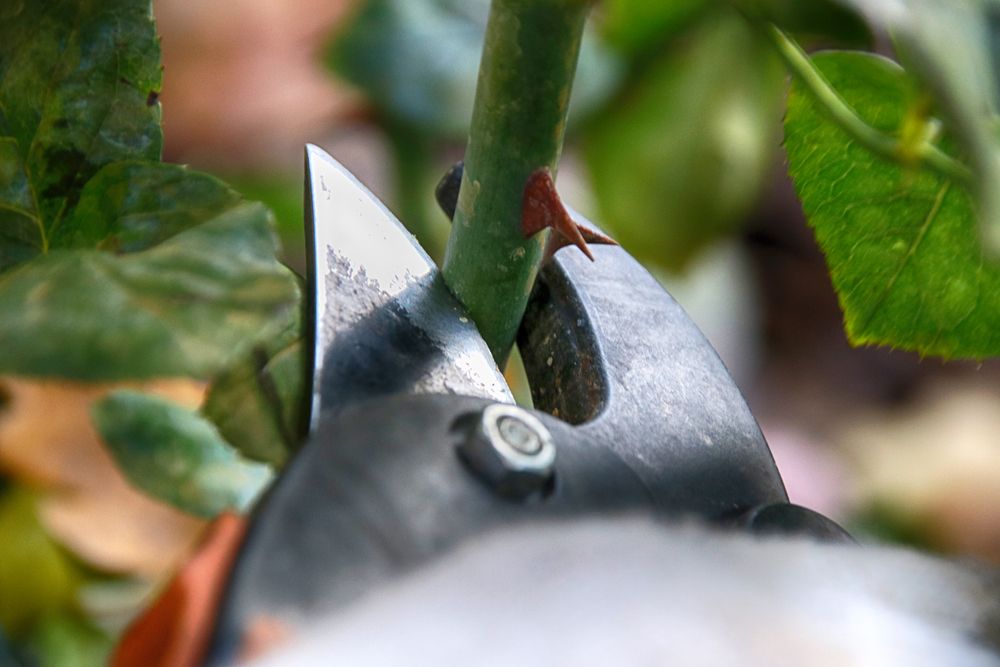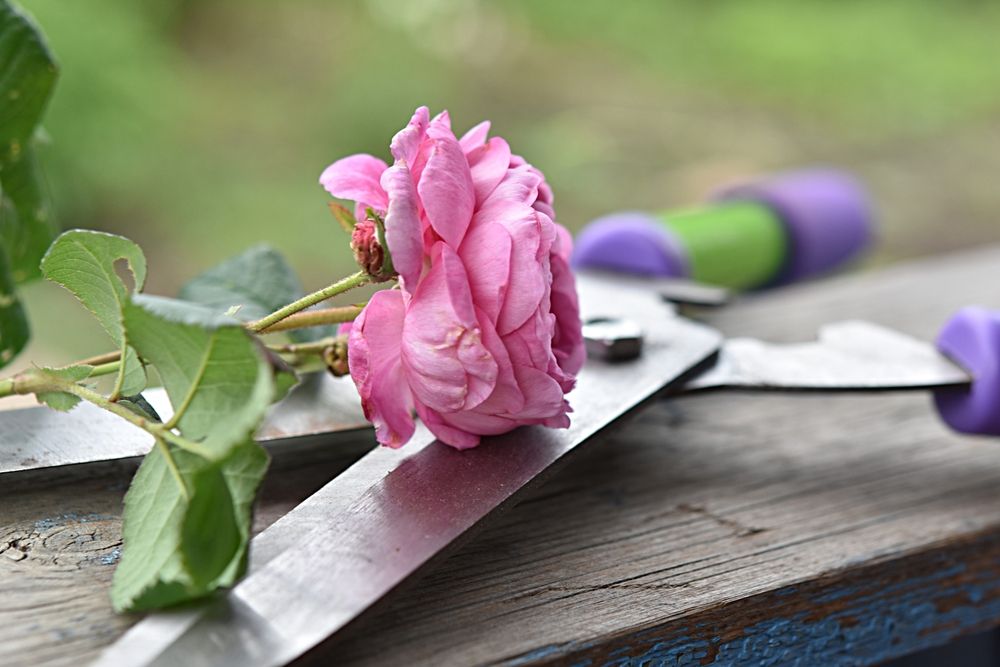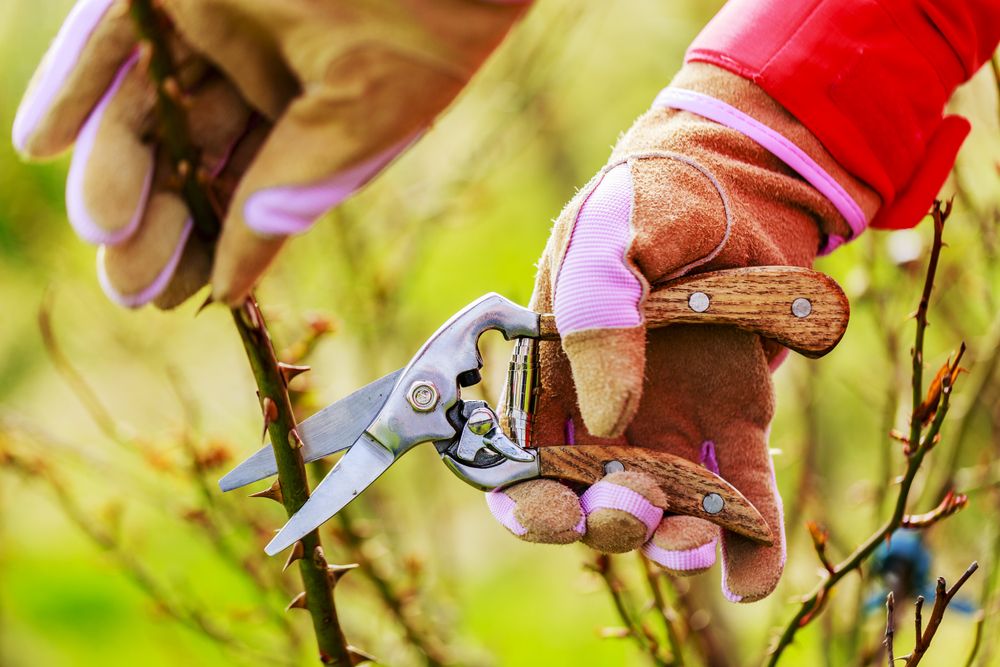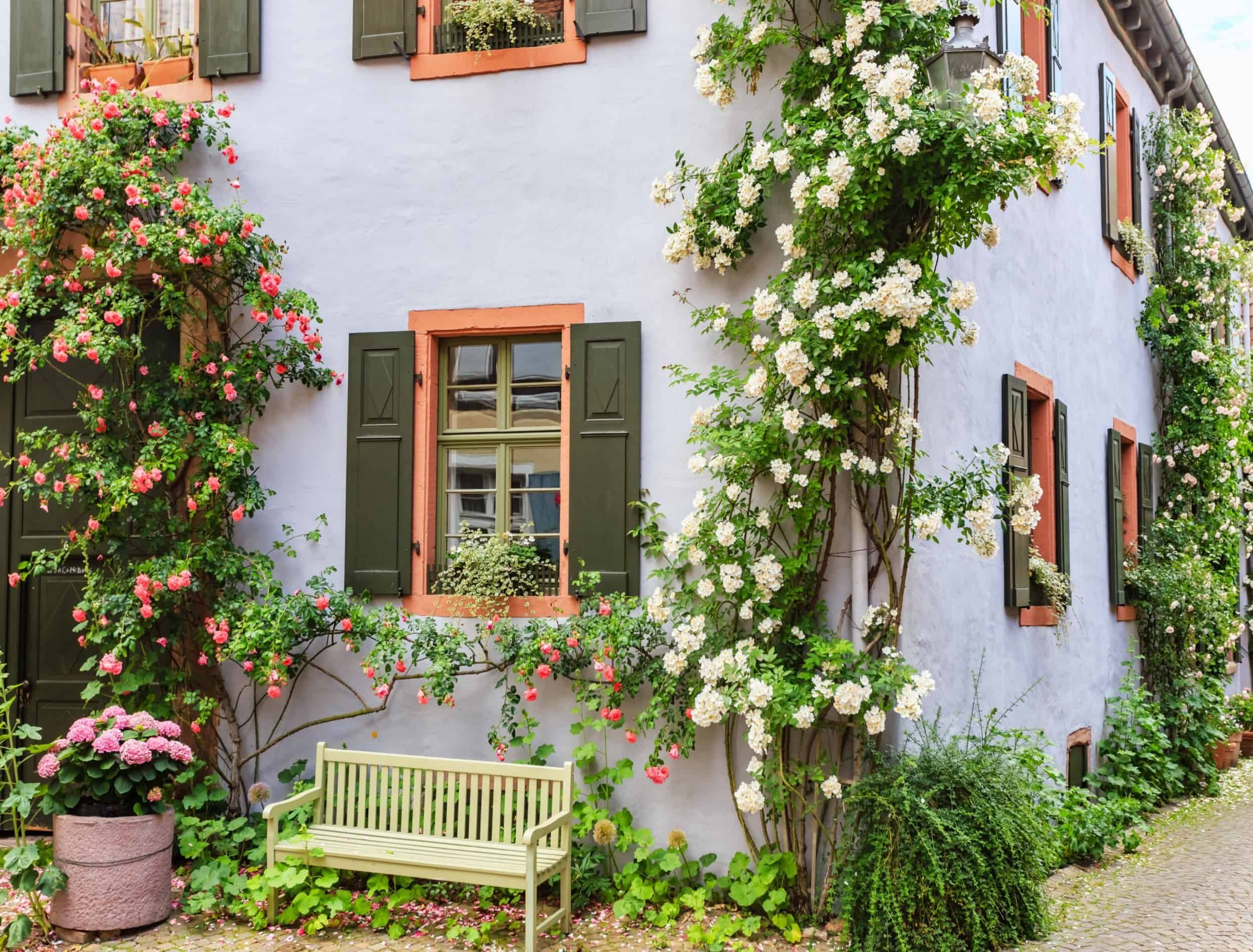There are many varieties of roses - each adding a touch of elegance to your home and garden. These prickly beauties are known to be tricky to prune but it's pertinent to their appearance and, most importantly, their health. Without proper pruning, the life span, production, and growth of your roses could be negatively affected, leading to emaciated English roses, shoddy shrubs, or hapless hybrid teas.
Learn everything you need to know about pruning your roses so they remain beautiful and plentiful.
Why Prune a Rose Bush?
Image credits: Olga_Ionina via Shutterstock
Roses are actually fairly hardy when it comes to enduring thorough prunings. Roses have the unique ability to break buds on old wood, so even if you cut too much, it’s nearly impossible to kill your rose due to pruning.
In fact, roses dying from pruning should be the last worry on your mind. It's much more likely that your pruning will result in your rose's blooms increasing in size and volume than that they will be harmed.
Certain species of roses will send out canes every which way, clogging up crossroads within the bush, and spreading the bush to spaces where it is not welcome. Not only can this be a nightmare when it comes to your garden's appearance, but it can also lead to health problems within the bush. Dense sections and damaged rose build-up can create shady areas that block sunlight, hold moisture, and support insect life and disease growth. Pruning out-of-control sections can help the overall health of your roses, and keep them under control.
Depending on the type of roses you have, you can control the overall appearance and help train your roses to look the way you want them to. You also can remove unsightly twigs, deadheads, and leaves to provide a more manicured look through the growing season.
How to Cut
Image credits: photowind via Shutterstock
It's one thing to have pruners, and another to know how to use them. When it comes to pruning roses, there is an art to how and where you cut.
Always make cuts about 1/4 inch above outward-facing buds and outward-facing mature sets of leaflets. Both of these areas will support new growth and rebloom.
Make your cuts at a 45-degree angle with the downwards slope falling away from the eye. This helps the rising sap to be drawn away from the budeye, which keeps it from covering it and helps the open cane wound naturally seal.
When you prune make sure that your cut shows a clean white or light green cross-section since decay can creep down the inside of a cane before it shows to the outside.
Seasonal Rose Pruning
Image credits: Michkasova Elena via Shutterstock
Although healthy pruning habits are common while plants are in dormancy, roses can be pruned through any season, especially if you gather blooms for arrangements. Always use the tips provided above when cutting to ensure the best growth.
Fall
Fall pruning should be done with care, especially in areas that have harsh winters for roses. Trim back long stems to prevent them from snapping due to winter storms. Remove crossed branches in case they rub and blow against each other in inclement weather and damage the cane.
Prune foliage and take out dead, diseased, or damaged materials as well. Canes smaller than a pencil diameter are safe to remove since many times they are nonproductive that late in the season. A rule of thumb is to take about ⅓ of the height and thin it out before winter.
Spring
When pruning for controlled growth and shape make your cuts in late winter before the plant begins to leaf out. This allows you to see the skeleton of the plant for shaping purposes, and also allows you to easily spot any dead or decayed canes from winter dieback. If you don’t want to cut too early for fear of a late cold spell, wait until the plant begins to show bud growth in early spring.
Don't be afraid to use your pruners in a liberal manner. Consider cutting your bush down 18 to 24 inches to promote bigger bloom growth. This helps rejuvenate the bush and forces energy into new growth on new canes. Old canes will still bloom but will be reduced. If you feel the cane is spent, cut it out. Also, remove crossed canes and interior canes to promote airflow and allow sunlight in.
Summer
Cutting flowers for arrangements, deadheading spent blooms, and cutting out rose hips can encourage new bloom growth. Summer pruning also includes removing sucker canes from the roots, maintenance, shaping, and removal of poor branching connections or damaged canes.
Pruning for Health
Image credits: gorillaimages via Shutterstock
It's imperative to the health of roses that they are regularly pruned. Removing dead, damaged, and diseased branches or canes promotes your bush's health.
Dead wood not only looks unsightly, but it's also unhealthy and attracts mold and fungus to your rose bush as the branches begin to decay. If you live in a humid climate the risk is even greater for your bush since decay is accelerated, so make sure you stay on top of removing dead branches.
Damaged material will seep sap and attract insects that spread disease or may feed on the weakened cane, weakening the plant even more. Diseased areas can easily spread throughout the plant as well as pass onto nearby plants via wind and insects.
Although roses have a defense mechanism that will create a break between healthy tissue and dead or dying material in an attempt to quarantine spread, occasionally this doesn’t work and you should keep a close eye on your plants if you suspect any sort of death occurring.
Tips for Rose Types and Non-Traditional Growth
Image credit: István Mihály from Pixabay
Although the above tips are all wonderful ways to help ensure the overall health and aesthetics of your rose bushes, there are a few other tips worth considering for specialized growth and specific varieties of roses. Below are those tips and their correlating varieties!
Large Blooming Variety
A large bloom needs a sturdy cane to support the weight of the flower. Force new growth by pruning further down the stem than the first mature leaflet. If you prune too far up the new growth may be too weak to support the weight.
Once-Blooming Varieties
Old-style roses only bloom once a year which can make them tricky to prune. If you prune in the spring you will lose the current year’s flowers, and if you prune in fall you might not have as many flowers the following year. Time your pruning right after the blooms are spent to influence healthy growth for the next year’s flowers.
Rose Hedges
If you are planting roses to create a hedge, be sure to plant them close enough to grow well together and then prune them as one unit rather than individual plants. Prune them for shaping and health.
Roses Growing in Pots
Treat your potted roses as you would if they were growing in the ground. If you find them to be blooming less prolific than normal, or have weak growth, they may be root-bound and need larger pots.
Colonizing Varieties
Colonizing roses produce new growth from their roots which spreads out over a large area. The easiest way to keep these species under control is to simply dig up extra growth as it becomes apparent and transplant elsewhere or share with friends.
Climbing Varieties
Image credits: nnattalli via Shutterstock
Climbing roses have both lateral and main canes. You can prune lateral canes as you would any other rose branches, but main canes have some specific requirements.
The main canes grow directly from the base and should never be pruned. Main canes put energy into growing before producing blooms, so if you cut them then you will have to wait on them to regrow again before they can produce blooms.
Old Garden Roses
Prune old garden roses right after they finish blooming. They do not need to be and should not be pruned heavily in the spring because blooms rely on wood from last year's growth.
Your old garden roses may bloom once a year in the spring, or twice a year in the spring and fall depending on the variety. Feel free to leave red hips on your old garden roses during the fall and winter for a splash of color.
Knock-Out Varieties
Knock-Out roses shouldn't be pruned until they reach mature heights, usually around their third or fourth year of growth. Because they only bloom on new growth, cutting out old growth first is a priority.
Generally, these shrub roses can be pruned in the same manner as other roses and be taken back about 1/3 their height in the spring and then pruned mid-season after bloom to encourage new growth and blooming. Keep the bush deadheaded and free of rose hips as well.
Ground cover Varieties
Ground cover roses grow wide instead of tall so pruning often has to do with shaping the plant horizontally.
If your bush outgrows where it belongs you can prune its lower branches to force the bush to grow upwards. To also help control the width of a ground cover variety, cut the cane at its base.
Hybrid Musk Varieties
The best way to keep a hybrid musk rose maintained is to prune lightly to remove spent flower clusters. You can also gently shape the bush so that it's round.
These bushes can tolerate severe pruning if necessary, but they should be only occasional instead of yearly.
Hybrid Teas
Hybrid teas require major pruning work to the point that you'll be closer to pruning 1/2 the bush away than 1/3 of the bush. Prune heavily in early spring right after the last frost but before the swelling of new buds. Choose a handful of strong branches to keep as your framework and prune away the rest.
Rip away all suckers from your roses, removing them from the rootstock they sprout on. Don't cut them, rip them away by hand because this will wound the rootstock, making it less likely to resprout suckers.
Miniature Varieties
Miniature roses are very resilient and can be pruned at any time of year. Generally, if you cut them back to 1/3 their height in the spring you will get the best blooms.
In Summary
Now you know everything you need to know about rose pruning! Hopefully, with your newfound knowledge and skills, your pruning will make the cut.
Just remember, roses are highly resilient to pruning, so don't feel nervous about making big cuts. If you follow the instructions outlined in this article you should run into no pruning problems.
I hope you found this guide helpful! If you did, be sure to share it and comment below with any rose pruning questions or tips.

